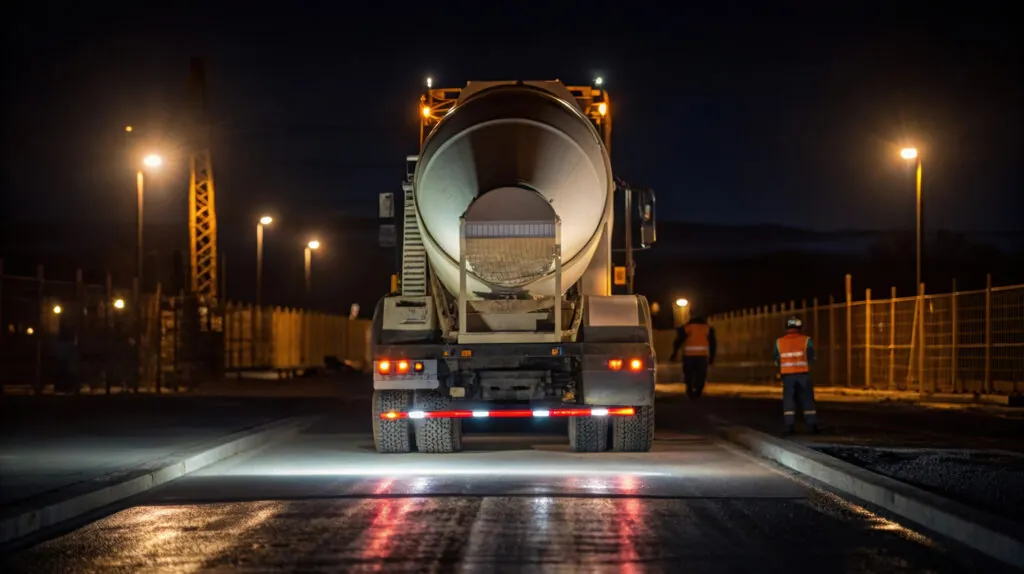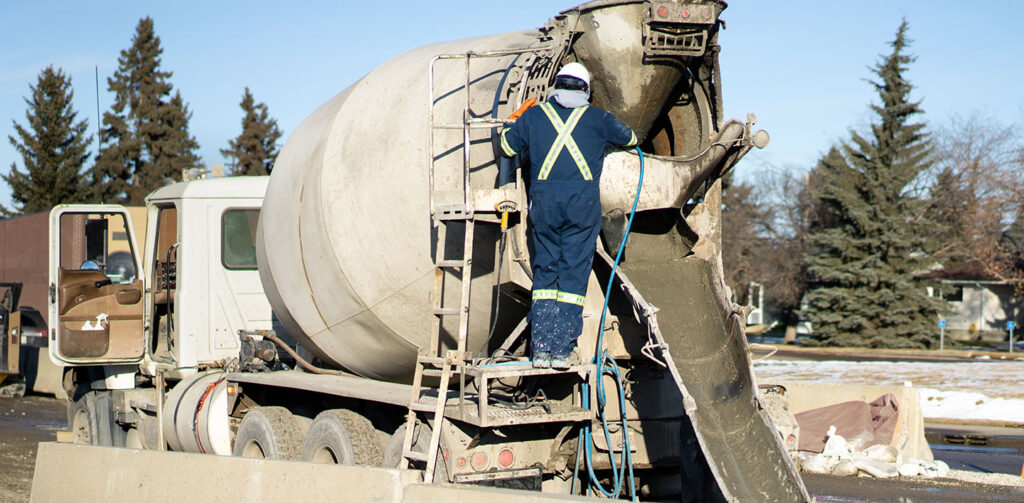
A Deeper Understanding of the Concrete Truck Drum
You rely on your concrete truck drum to keep projects moving. It’s a highly complex piece of machinery. It’s your means of producing material for your crew’s pours. Of course, on top of all that, it’s a substantial investment. But how much thought have you actually given to this important component of your concrete work?
At General Chipping, we believe the more knowledge a person has regarding the tools and equipment that fuel their jobs, the better. Not only does a better understanding make it easier to look after your equipment, but it often provides insights allow you to approach your work in a smarter, more strategic way. Here, our concrete chipping experts offer insights you need to know about your concrete mixing drum. From how it works to steps you can take to keep it healthy, it’s a deep dive on all things concrete mixer drum. Let’s get started!
The Important Role Internal Blades Play in Your Concrete Mixer Drum
The concrete mixer drum on your ready mix truck is a form of batch mixer, meaning it combines ingredients to form a measured batch of material for a given pour — as opposed to blending material on a continual basis. In the U.S., most of these drums fall into the “rear discharge” or reverse mixer category of batch mixer, as concrete is discharged from the back with help from a chute.
Much of a pour’s success hinges on blades inside the concrete mixer drum, also known as augers. Here, we’ll take a look at how they go about their work.
- Drum Mixer Blades Blend Material Needed for Concrete Pours: Whether a project calls for concrete to be mixed on-site or blended beforehand and then transported to the pour, it all begins with crews loading concrete’s key ingredients — cement, water and various aggregates — into the mixing drum. Once loaded, the drum’s internal blades are set in motion, blending components into a uniform mix suitable for the project.
- Drum Mixer Blades Agitate Material During Transit: Consistent motion is key for concrete prepared ahead of time and then transported to a job site. That’s why you’ll often see concrete drums slowly rotating when you spot them in traffic. This motion is known as “charging,” and it helps to keep the concrete blend from hardening en route to the job site — while also keeping heavier aggregates from sinking to the bottom of the blend. When all goes according to plan, the mixture is adequately mixed and at the proper consistency upon arrival.
- Drum Mixer Blades Help Keep Material from Spilling Out During Transit or Breaks: When a ready-mix concrete truck’s drum is not actively discharging material, it rotates backward so the augers continuously pull the concrete inside, preventing material from spilling out.
- Drum Mixer Blades Aid in Extraction for Efficient Pours: Once the redi mix concrete truck has reached its destination and material is adequately blended, the team reverses the drum mixer’s spin to begin extracting the mixed concrete. With help from a designated “chuteman” and a chute that leads to the pour site, the angled blades expel the mixture, regulating the flow in a way that encourages even distribution while also keeping wasted material to a minimum. In instances where the ready mix truck can’t reach the site, pumps and conveyor belts extract the material directly from the mixing drum.
Fun Fact: Archimedes was a Greek mathematician and engineer who is thought to have invented one of the earliest hydraulic pumps on record. The way a redi mix truck drum operates is based off the same principles as Archimedes’ Screw, an ancient creation originally invented to move water and similar materials. The old-time design featured a spiral blade inside a cylinder designed to move material in one direction or another.

Keeping Drum Health Top of Mind During and After Pours
Your concrete mixtures and the way your ready mix truck drum behaves can tell you a lot about the overall health of your drum. (But you have to be paying attention.) Here are three simple considerations that can keep your team’s work on track and your important equipment serving you well.
- Watch for Irregularities in Your Drum’s Spin: Remember, once your material has been mixed, it’s important to keep it moving. Whether your drum is mixing or agitating your concrete, its rhythm should be free from halts or lags. Irregular movements could point toward potential mechanical issues or damage brought on by buildup. If something seems off, take steps right away to address it. Righting issues early on is the best way to keep them from growing into budget-breaking problems.
- Check the Consistency of Your Concrete: When dried material along your ready-mix truck’s walls reaches a certain level, it has a tendency to break off and blend into the fresh concrete. When this happens, it can diminish the finished product’s appearance and, even worse, affect its strength.
- Never Overfill Your Mixing Drums: A concrete truck’s drum rating determines the maximum amount of concrete recommended for a particular drum. This rating is an instruction — not a suggestion — and should be carefully adhered to. Although it’s physically possible to fit more material into a mixing drum than what is advised, doing so can have costly consequences. Not only can it result in spills while in transit, but it can hinder the drum’s ability to adequately mix your concrete blends. Empty space is necessary, as it allows for free movement of the aggregates and other ingredients.
Establishing Healthy Maintenance Practices for Your Mixing Drums
Ongoing maintenance plays a crucial role in ensuring the long-term health of your drums and mixers — and keeping them safe for your team’s use, too. Such maintenance can be a joint effort between your crew and your concrete chipping company.
As it relates to your team, take care to remove as much material as possible during a concrete pour to slow encroaching buildup. Chemical drum cleaners can also help keep material from sticking to your drum’s walls, but it’s only a temporary solution. You will eventually need maintenance support from a crew of licensed concrete chippers.
You should also incorporate professional concrete chipping appointments every three months, per industry standard. By welcoming trained and licensed crews onto your site to assess your drums, silos and mixers — and address buildup and other issues — you can stop potential trouble in its tracks. It’s important to remember, however, that concrete chipping is incredibly dangerous work that should only be attempted by trained teams.
Your concrete truck drum is an incredible feat of engineering, and if you do right by it, it will serve your operations well for years to come. If you have questions about any of what you’ve just read, concerns about your fleet — or if you’re interested in learning more about our concrete chipping, silo cleaning or central mixer cleaning services — feel free to reach out to General Chipping at any time. Our team is always glad to help.
